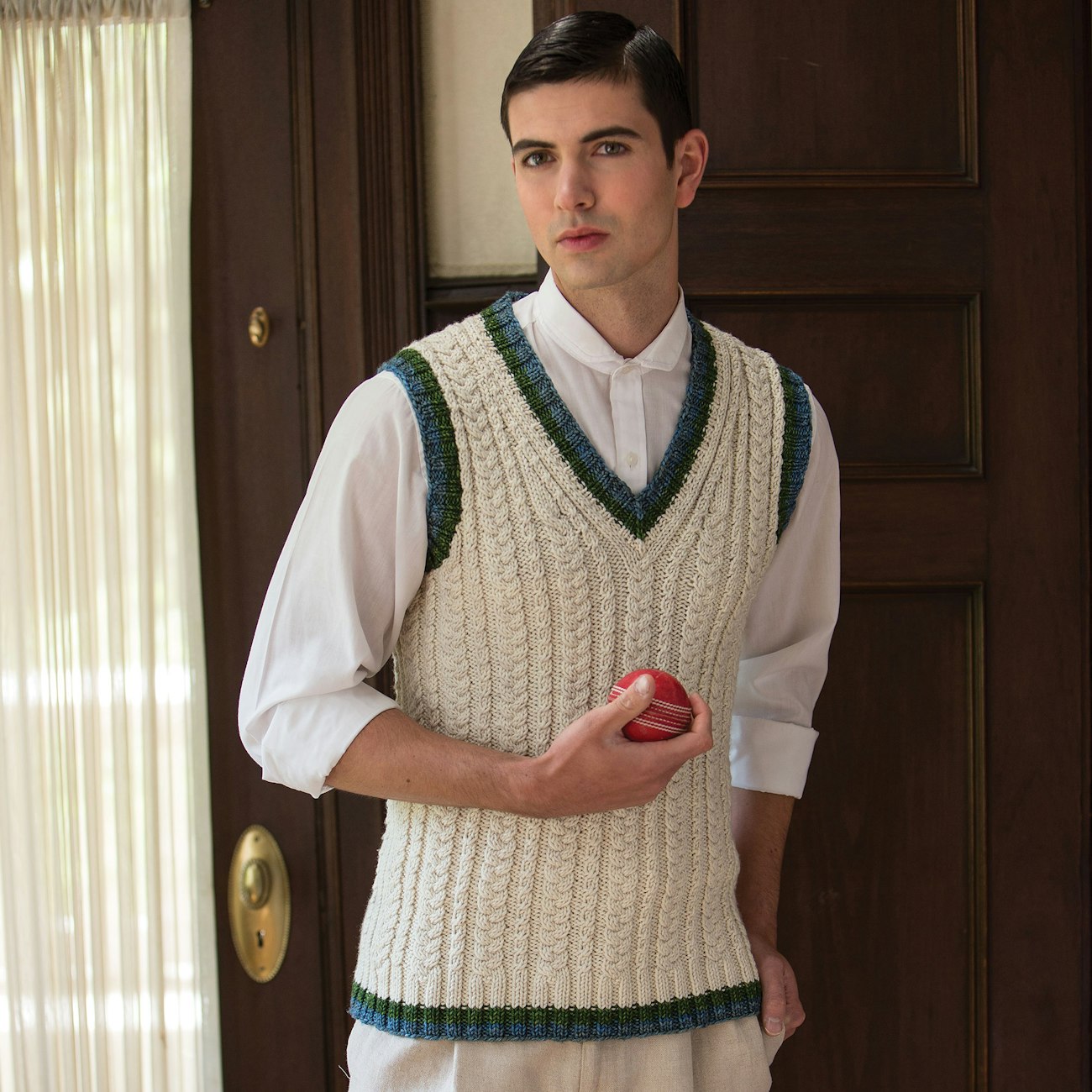Savvy knitters know the value and artistry of a handmade piece of clothing, and a vest can offer style and substance with so much less time commitment than a sweater. A knitted pullover vest is generally quite straightforward in its shaping, and so it is equally suitable for new knitters ready to take the plunge into making a garment or for experienced knitters ready to try an unfamiliar technique. A timeless wardrobe staple, a vest is perfect for adding warmth to your wardrobe: it is comfortable and always in style.
Vest Benefits
1. Less is more: you have found beautiful yarn, and you are itching to knit something lasting, but eek—you have less yardage than you had hoped. A vest to the rescue! Because most vests require between ⅓ and ½ as much yarn as a sweater, a vest will still give you the reward of garment, but with less expenditure in yarn and time.
2. Time-saving grace: vest knitting is great for knitters who like to work in the round—no seaming later, and no sleeves to make, which is great if you fear the dreaded second-sleeve syndrome. If you prefer to knit flat pieces, still no worries: there are only two seams to sew!
3. A small canvas: a vest is a great way to try a new technique such as colorwork or cables, and you have relaxing rows of knitting with few increase or decrease rows or rounds to worry about. And you only need to embellish the front, especially if it is to be worn under a cardigan or jacket.
4. Conversely, we are so accustomed to seeing a plain knit on the back of a vest that a pattern there can be used as an eye-catching device.
5. A custom fit: the simple pattern pieces mean that you will not need to indulge in higher math to make small changes. Follow the guidelines of the pattern to determine whether you need an even or odd stitch count for each part of your vest and add or subtract stitches as necessary. Unlike cardigans, socks, hats, and gloves, there is not much shaping to the body of a pullover vest, so the changes can be quite simple but effective.
It’s in the Details
The prominence of the armhole and neckbands provide a few rows where you can practice some skills (such as centered decreases, or decorative bind-offs) and you can add some personal details without having to make large adjustments to a pattern. You can also add variation to the waistband ribbing by trying out corrugated ribbing or by bringing a design element from the body of the vest, such as a cable, down into the ribbing itself.
A handmade vest offers a blend of craftmanship, comfort, and creativity that is really satisfying. And, unlike a pair of handknit socks which may be hidden away underneath, a vest is a way to wear your knitting proudly for everyone to see.
 The contrast ribbing at the armholes and neckline of a vest is a great place to use up small amounts of yarn. Photo by Joe Hancock
The contrast ribbing at the armholes and neckline of a vest is a great place to use up small amounts of yarn. Photo by Joe Hancock
Find the original and updated patterns for the Vest for the Cricket Match in the Farm & Fiber Knits Library and cast on a vest for spring.
Pat Olski is the editor of PieceWork.

